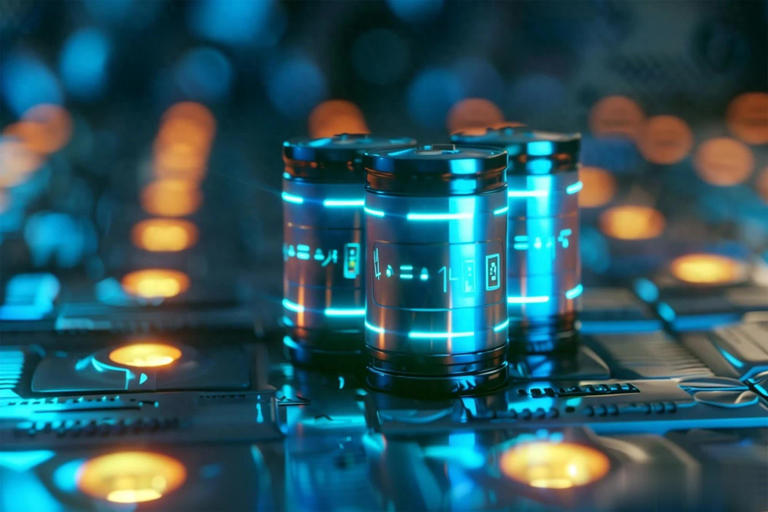

Researchers at Cornell University have developed an innovative porous crystal by combining the macrocycle and molecular cage structures in a unique way. This material has significantly enhanced the transport efficiency of lithium ions in solid-state batteries.
The newly designed crystal is characterized by one-dimensional nanochannels, which considerably boosts its electrical conductivity. It holds the promise of not only providing a safer battery solution but also demonstrating potential application value in areas such as water purification and bioelectronics.
Through integrating two distorted molecular configurations, the research team managed to create a novel porous crystal. This crystal can effectively absorb lithium-ion electrolytes and enable smooth transport via the one-dimensional nanochannels. This innovative design plays a crucial role in improving the safety of solid-state lithium-ion batteries.
This research achievement is meticulously documented in the paper titled "Supramolecular Assembly of Fused Macrocycle-Cage Molecules for Fast Lithium-Ion Transport", which was recently published in the Journal of the American Chemical Society. The first author is Yu-Zhe Wang.
The project was led by Yu Zhong, an assistant professor of materials science and engineering in the College of Engineering at Cornell University and also the main supervisor of the paper. His laboratory is dedicated to developing soft and nanoscale materials that can drive the progress of energy storage technologies and contribute to the attainment of sustainable development goals.
When Yu-Zhe Wang joined Cornell University as a junior transfer student, he quickly established contact with Yu Zhong, who had a keen interest in exploring methods for manufacturing safer lithium-ion batteries.
In the pursuit of safer and more reliable energy storage technologies, among a multitude of research topics, finding a means to significantly enhance the safety of lithium-ion batteries has always been Yu Zhong's top concern. Traditional liquid electrolytes, although allowing ions to move freely, are prone to forming dendritic protrusions that can lead to short circuits or even explosion risks. In contrast, solid-state batteries are favored due to their higher stability. However, ensuring efficient ion flow within them remains a challenge. Consequently, Yu Zhong aimed to construct a new type of porous crystal system that could support rapid lithium-ion migration while reducing unnecessary interactions.
Thanks to the support of the College of Engineering, Yu-Zhe Wang embarked on his work and cleverly combined two eccentric molecules with complementary shapes – the macrocycle and the molecular cage. Both of these elements inherently possess certain spatial voids, making them ideal locations for lithium ions to either stay or pass through.
"Both the macrocycle and the molecular cage have naturally existing cavity structures," Yu-Zhe Wang explained. "By utilizing them as the foundational units for constructing the porous crystal, we can create an overall structure that features a vast internal space along with dedicated channels for ions to travel through."
According to the design plan, each complex consists of a molecular cage positioned at the center and three macrocycles arranged in a radiating manner outward. These components are connected by hydrogen bonds to form a larger and more complex three-dimensional network structure. This unique configuration enables the final product to reach an unprecedentedly high level of ionic conductivity.
"This is one of the best performances achieved so far for solid-state lithium-ion conductors prepared on a molecular basis," Yu Zhong remarked.
To comprehensively understand the characteristics of the new material, the research group also collaborated with experts in the field of materials science to conduct detailed experimental analyses. "By integrating all the information, we can now clearly explain why this special geometric form is so conducive to ion transport and understand why using this material can yield such excellent performance," they said.
Apart from improving existing lithium-ion batteries, this new type of crystal is also expected to find applications in fields like the selective separation of specific components during the water treatment process and the development of hybrid ion/electron transport media.
" The concept of macrocycle-cage molecules is a novel attempt for us," Yu Zhong added. "Although there have been previous research reports on the macrocycle and the molecular cage separately, few have delved into how to fully utilize their unique morphological features to guide the self-assembly process of complex structures. Currently, we are actively exploring more types of molecular combination methods, aiming to create diverse functionalized nanoporous materials. These efforts may not only contribute to the progress of the lithium-ion battery industry but also bring revolutionary changes to numerous other high-tech fields."